Have Bald Spots? Here's 11 Ways to Get Rid of Them
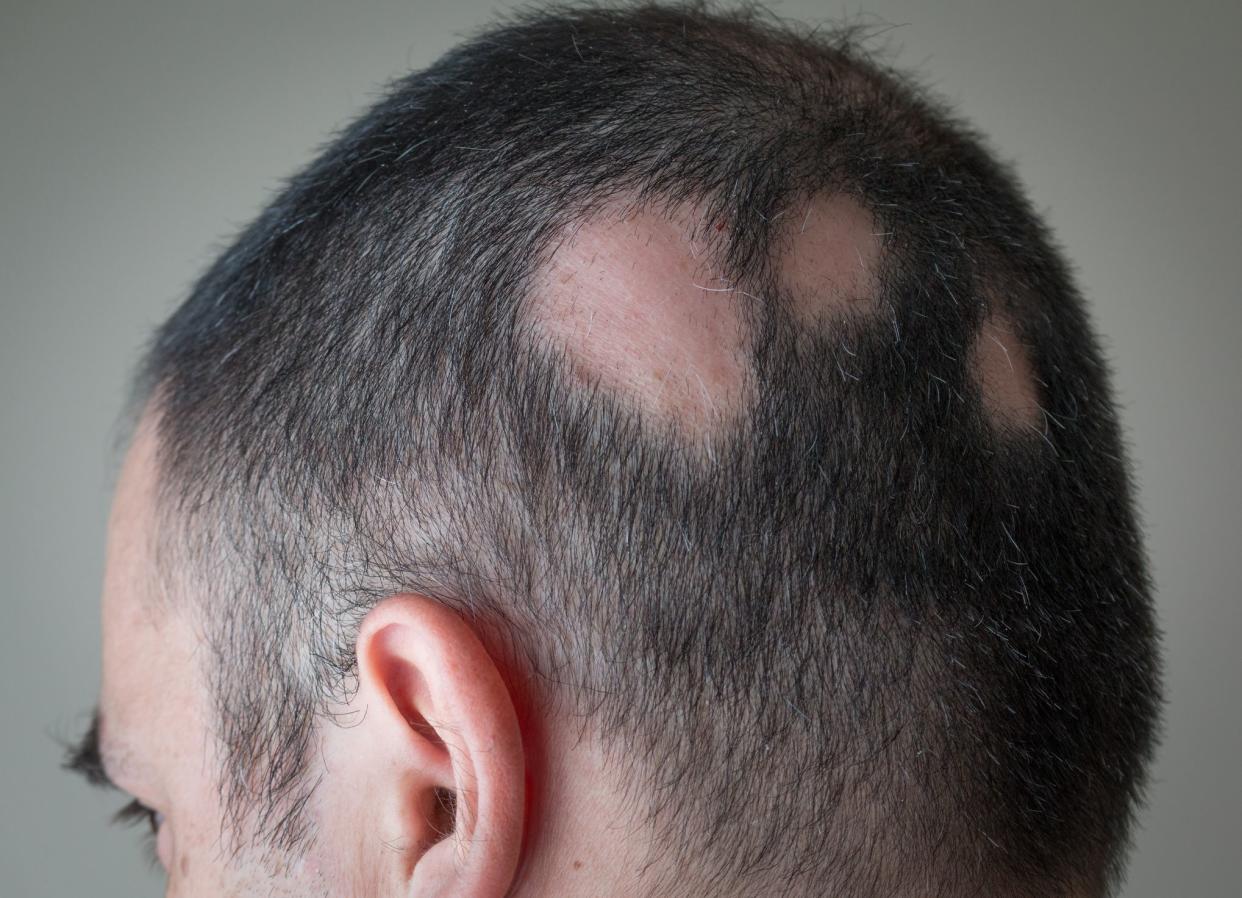
How to Get Rid of Bald Spots
Have you ever noticed a bald patch while you’re brushing your hair, looking in the mirror or just checking out a photo of yourself?
Hair loss is a common problem that affects tens of millions of men every year. It can vary hugely in severity from a small bald patch on your crown or around your hairline to severe hair loss that affects your entire scalp.
Although one of the most common causes of bald spots is male pattern baldness, other medical conditions may cause you to develop bald spots in specific areas of your scalp.
While bald spots can be embarrassing, they’re almost always treatable with medication, surgery or changes to your hair care and styling habits.
Below, we’ve explained how bald spots usually form, as well as the specific conditions that can cause them. We’ve also shared DIY and medical treatment techniques that you can use to help you encourage hair regrowth, get rid of bald spots and make hair loss less of a problem for you.
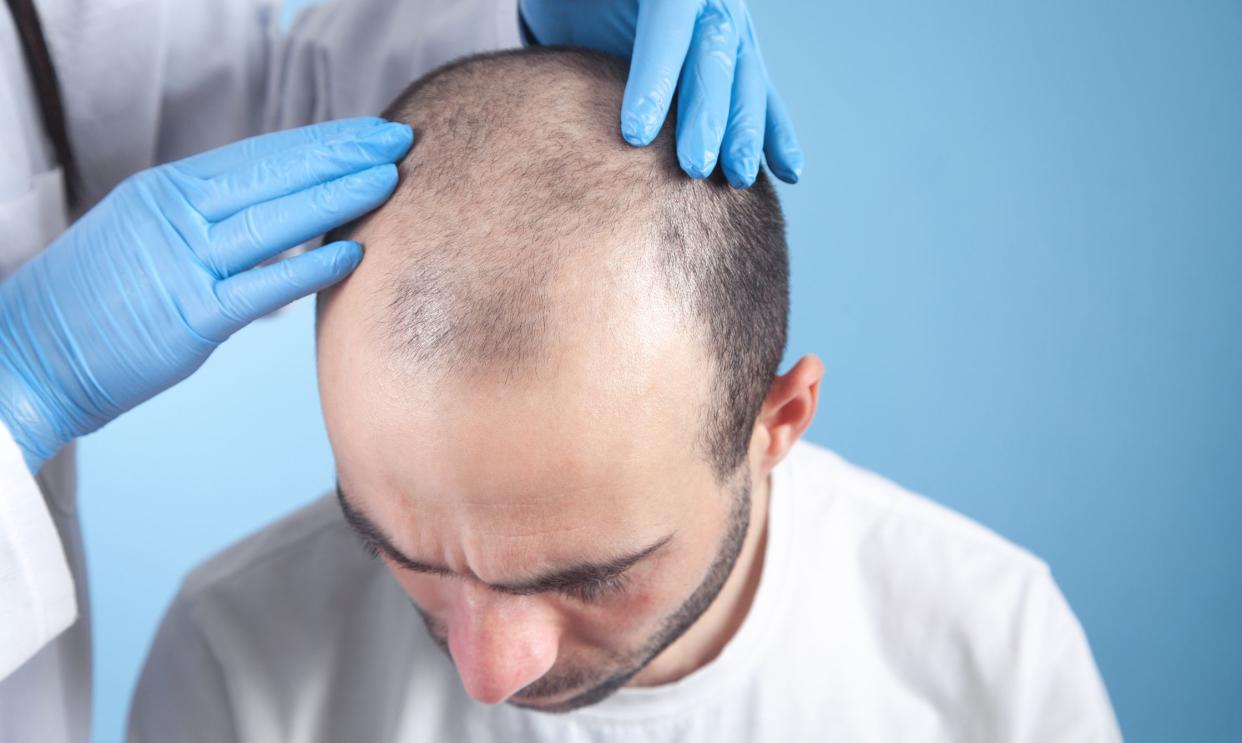
Bald Spots: The Basics
Bald spots can develop as a result of several different conditions, making it important to seek expert advice if you notice your hair thinning in certain areas.
Most bald spots, particularly those that develop around your hairline or the crown of your head, are caused by male pattern baldness (also known as androgenetic alopecia).
Small, patchy bald spots can also develop due to a condition called alopecia areata, also known as “spot baldness.”
Certain infections, such as tinea capitis (scalp ringworm) can also cause patches of hair loss in some parts of your scalp.
There are numerous ways to get rid of bald spots. In some cases, hair loss medications may help you regrow your hair. Other options include surgery, non-surgical procedures or simply covering them up with the right haircut or styling technique.
If you’ve noticed a bald spot forming, you should seek medical advice from a licensed healthcare or dermatology provider to learn more about your treatment options.
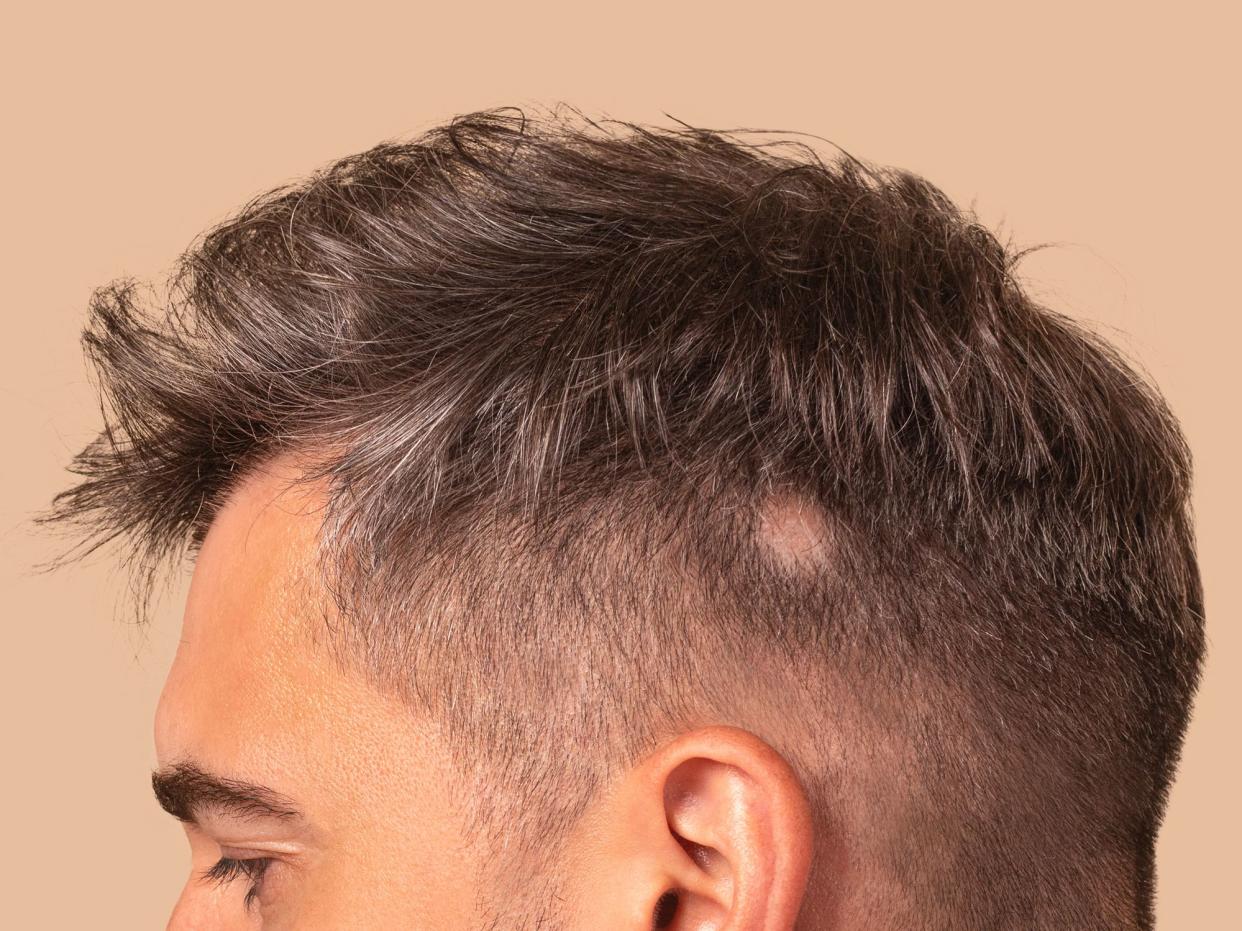
What Causes Bald Spots?
Bald spots are a common symptom of hair loss. They develop when a large number of hairs in a specific part of your scalp shed, either suddenly or over the course of several months or years.
Several different conditions can cause bald spots to develop. The most common is male pattern baldness, which affects approximately two-thirds of all American men by the age of thirty-five.
Male pattern baldness is caused by hormonal factors, primarily your sensitivity to the androgen hormone DHT. We’ve talked about the hormonal causes of baldness more in our detailed guide to DHT and male hair loss.
Hair loss from male pattern baldness usually occurs in a specific shape or pattern. Some of the more common hair loss patterns involve bald patches that can develop close to your temples or around the crown of your head.
If you’ve noticed hair loss around your hairline or a bald patch at the crown of your head (the top of your skull), there’s a good chance that it’s the result of male pattern baldness.
In addition to male pattern baldness, several other forms of hair loss can cause bald patches to develop:
Alopecia areata. This form of hair loss, also referred to as spot baldness, occurs when your body’s immune system attacks your hair follicles. It causes small bald spots about the size of a coin to develop on your scalp and in other parts of your body.
Hair loss from alopecia areata generally isn’t permanent, meaning your hair may grow back once the underlying cause is treated.Tinea capitis. Tinea capitis, or scalp ringworm, is a type of fungal infection that develops on your scalp and in your hair follicles. It can cause patchy hair loss that affects different parts of your scalp, eyebrows and eyelashes.
When tinea capitis causes inflammation (referred to as kerion) it can cause scarring and permanent hair loss.
Bald spots can get larger quickly, making it important to talk to a licensed healthcare provider as soon as you notice you’re losing hair.
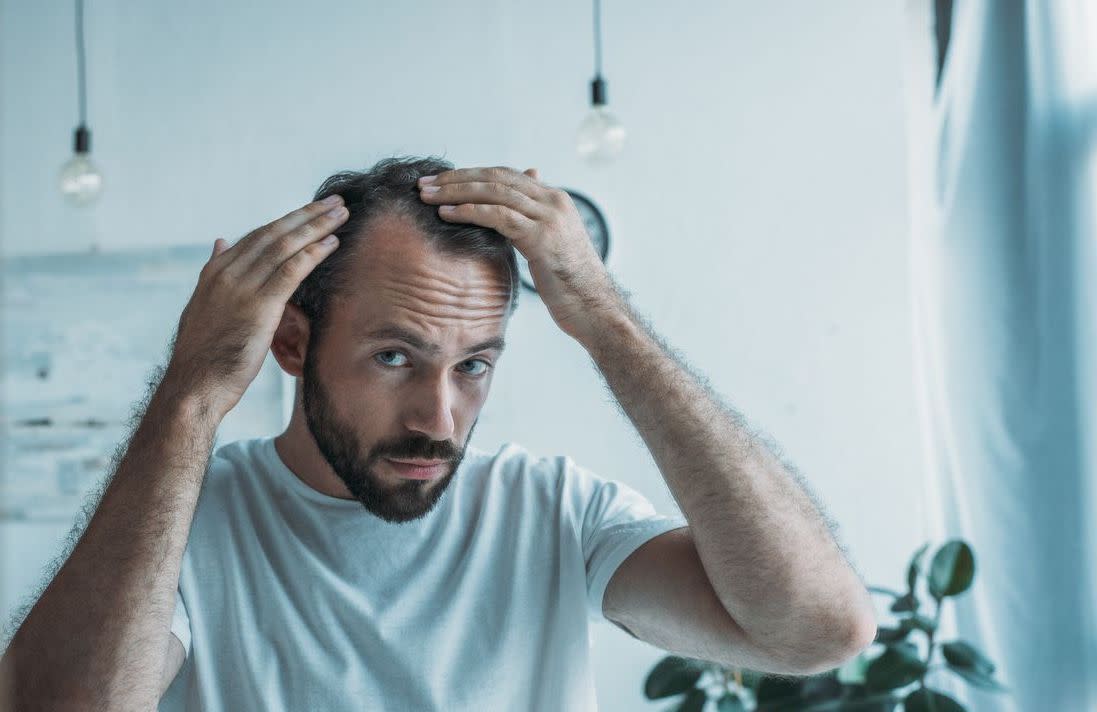
Medical Ways to Get Rid of Bald Spots
Most bald spots are treatable by using hair products for bald spots, using medication, by making changes to your lifestyle or by undergoing surgery to transplant hair to the area that’s affected by hair loss.
Since several different conditions can cause bald spots, it’s important to accurately diagnose the cause of your hair loss before you start treating it.
To work out the specific cause of your hair loss, your healthcare provider may ask you questions about your symptoms. In some cases, your healthcare provider may take a sample of your skin or hair for testing to provide an accurate diagnosis.
Depending on the cause of your hair loss, you may be able to treat your bald spots using one or several of the methods listed below.
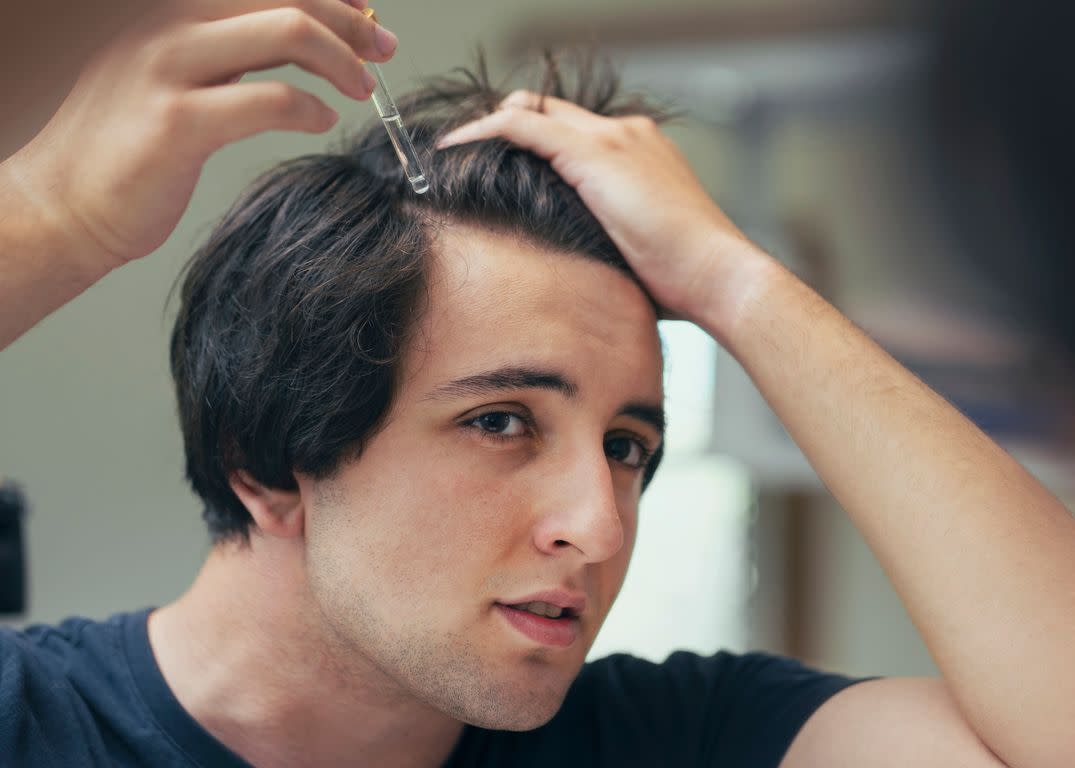
Use Minoxidil
Minoxidil is a topical medication that stimulates new hair growth. It works by making hairs enter into the anagen, or growth, phase of the hair cycle earlier than normal. It also lengthens the growth phase, allowing your hair to spend more time growing and less time resting.
Numerous studies have shown that minoxidil is effective at stimulating hair growth in men with male pattern baldness. It’s also effective at treating the patchy bald spots that can develop as a result of alopecia areata.
Currently, there’s no research available about minoxidil’s effectiveness for bald spots caused by tinea capitis.
Minoxidil starts working right away, but the results aren’t immediate. On average, you’ll need to keep using the medication for three to six months before you’ll be able to see improvements in your hair’s thickness and density.
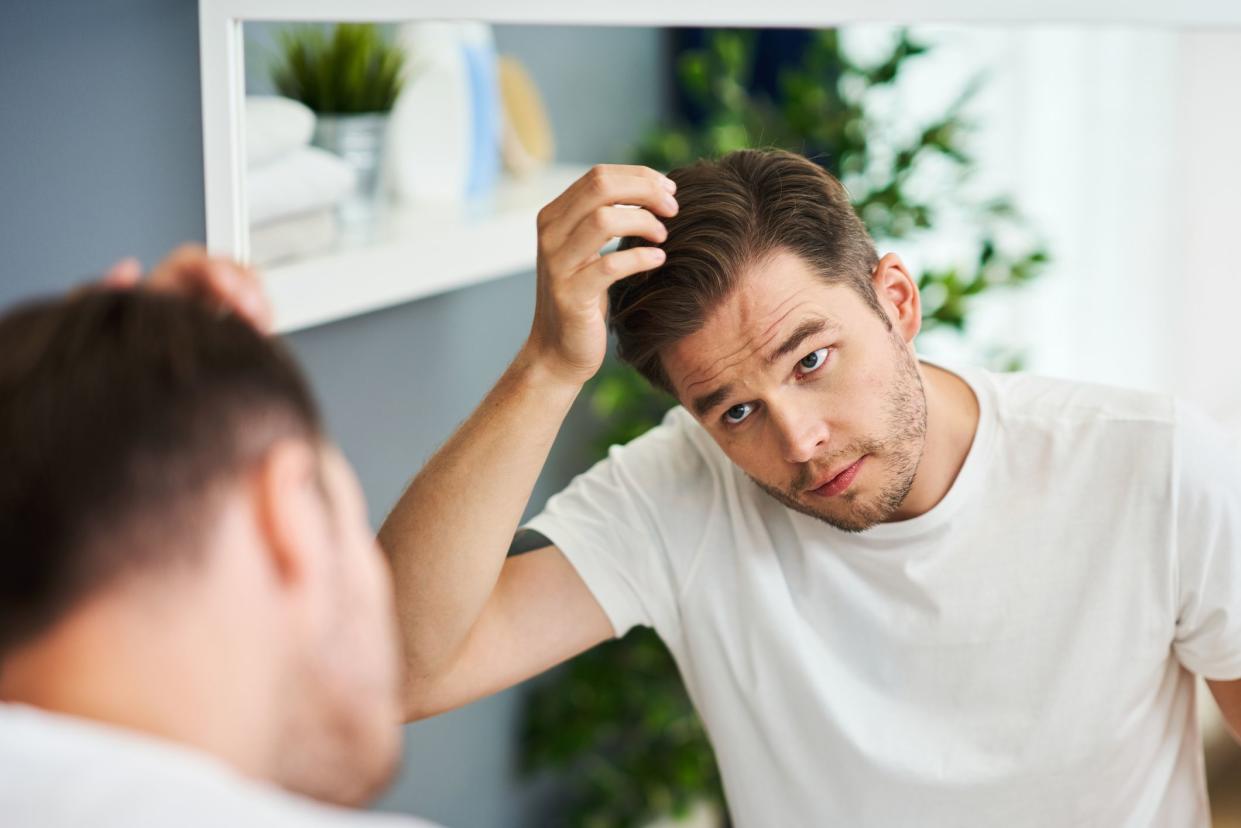
Use Finasteride
Finasteride is a prescription medication that treats hair loss caused by male pattern baldness. It works by preventing your body from converting testosterone into dihydrotestosterone (DHT), the hormone that damages your hair follicles and causes pattern hair loss.
Several studies have found that finasteride is effective at slowing down or stopping the effects of male pattern baldness. One study even found that it’s effective at stimulating hair growth around the crown — a common area for bald spots.
Unlike minoxidil, finasteride isn’t an effective treatment for bald spots caused by alopecia areata or other non-hormonal causes of hair loss.
Although finasteride works quickly to block DHT, it usually takes three to four months to produce a noticeable improvement in your hair. For best results, consider using minoxidil and finasteride together to target your hair loss from multiple angles.
(Related: Finasteride for Hair Loss: Side Effects, Dosage & More)
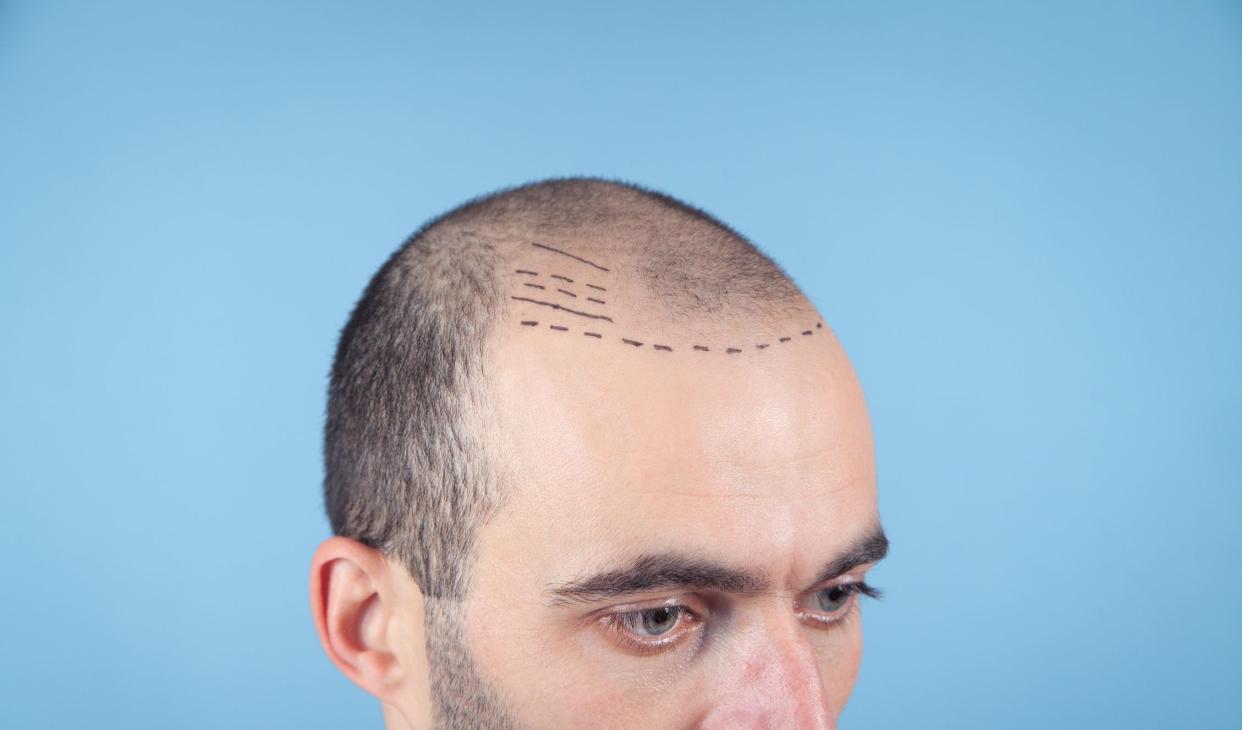
Get a Hair Transplant
If you have significant hair loss and obvious bald spots but thick, healthy hair on the rest of your scalp, you may want to consider getting a hair transplant.
Hair transplantation is a surgical procedure that involves removing hairs from the areas of your scalp unaffected by hair loss (typically the back and sides), then moving them to thinning areas or bald spots.
Performed correctly, this type of procedure can completely fill in your bald spots, making them look exactly the same as the areas of your scalp with naturally thicker hair.
Hair transplant surgery is usually performed to treat hair loss from male pattern baldness, but it may be used for other types of hair loss too.
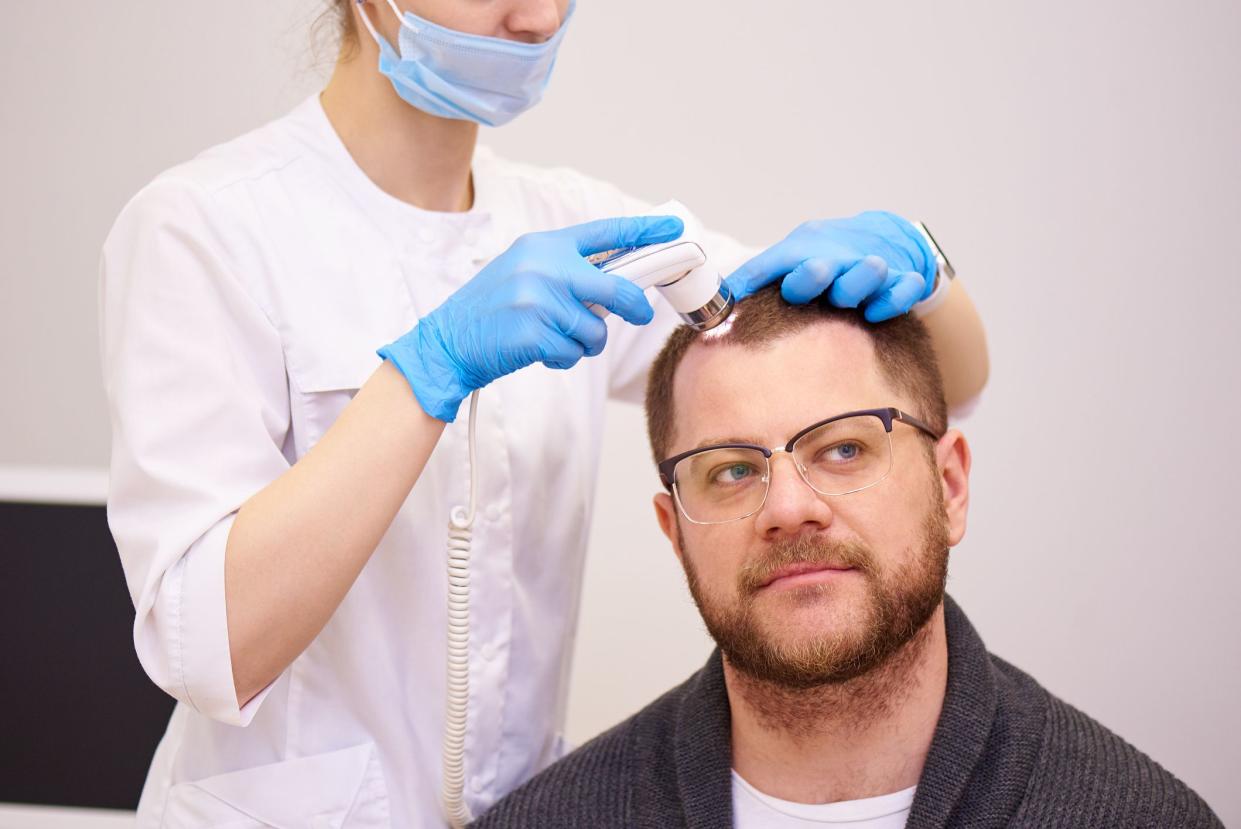
Undergo Scalp Micropigmentation
If the idea of undergoing hair transplant surgery to restore your hair isn’t appealing to you, you may want to consider scalp micropigmentation.
This non-surgical procedure involves applying a special type of cosmetic tattoo to your scalp to create the illusion of shaved hair, stubble or extra hair density. The pigments are chosen to be as close to your natural hair color as possible, with a similar look to a very short buzz cut.
Although this type of procedure doesn’t physically get rid of a bald spot, it can make small bald patches, scars or other hairless areas much less visible.
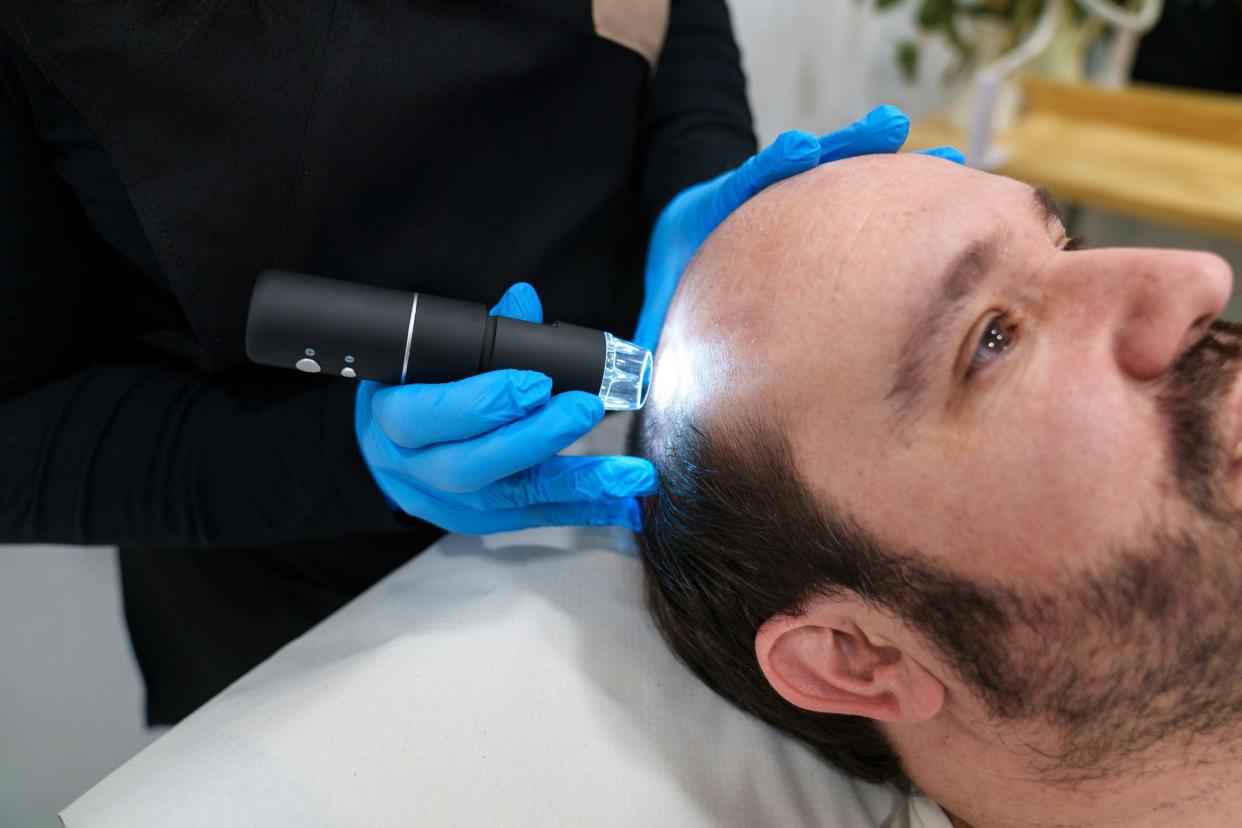
Treat Alopecia Areata
If you have bald spots caused by alopecia areata, it’s best to talk to your healthcare provider or dermatologist about treating the underlying cause.
Currently, there are no treatments that are effective for everyone with alopecia areata. However, some treatments may help to block the effects of your immune system on your hair and provide relief from your symptoms.
Common treatments for alopecia areata include:
Oral, topical or injectable corticosteroids
Immunotherapy medications
Anthralin cream
Immunomodulators
Minoxidil
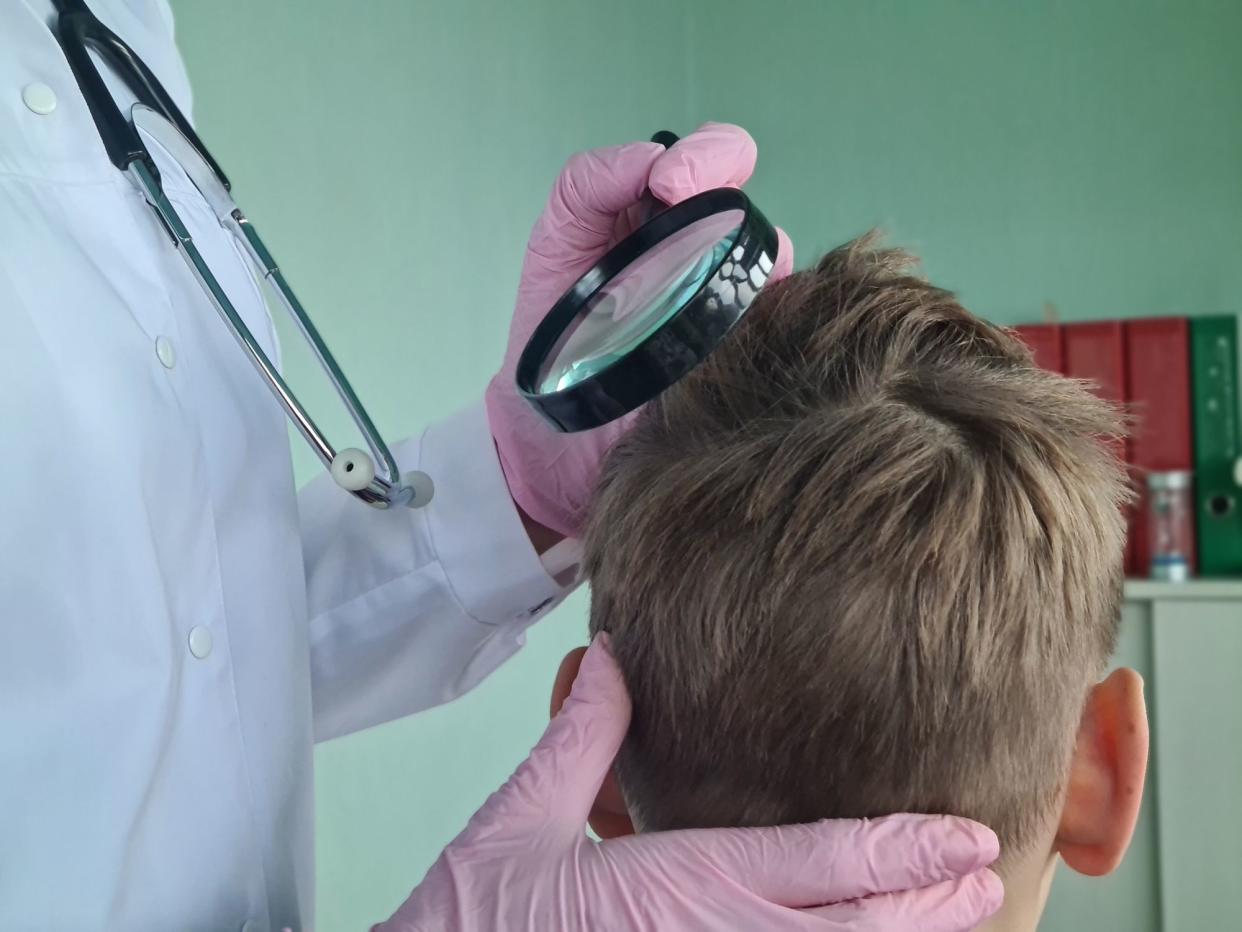
Treat Tinea Capitis (Scalp Ringworm)
If your hair loss is caused by tinea capitis, your healthcare provider may prescribe medication to treat the infection by killing the fungal cells and/or preventing them from multiplying.
Several different antifungal medications are used to treat tinea capitis. Make sure to take your medication exactly as prescribed for the full treatment period, even if your symptoms improve relatively quickly. This will help to prevent the infection from returning.
Your healthcare provider may suggest certain habits and lifestyle changes to help you prevent the infection from coming back. We’ve talked more about these in our full guide to dealing with scalp fungus.
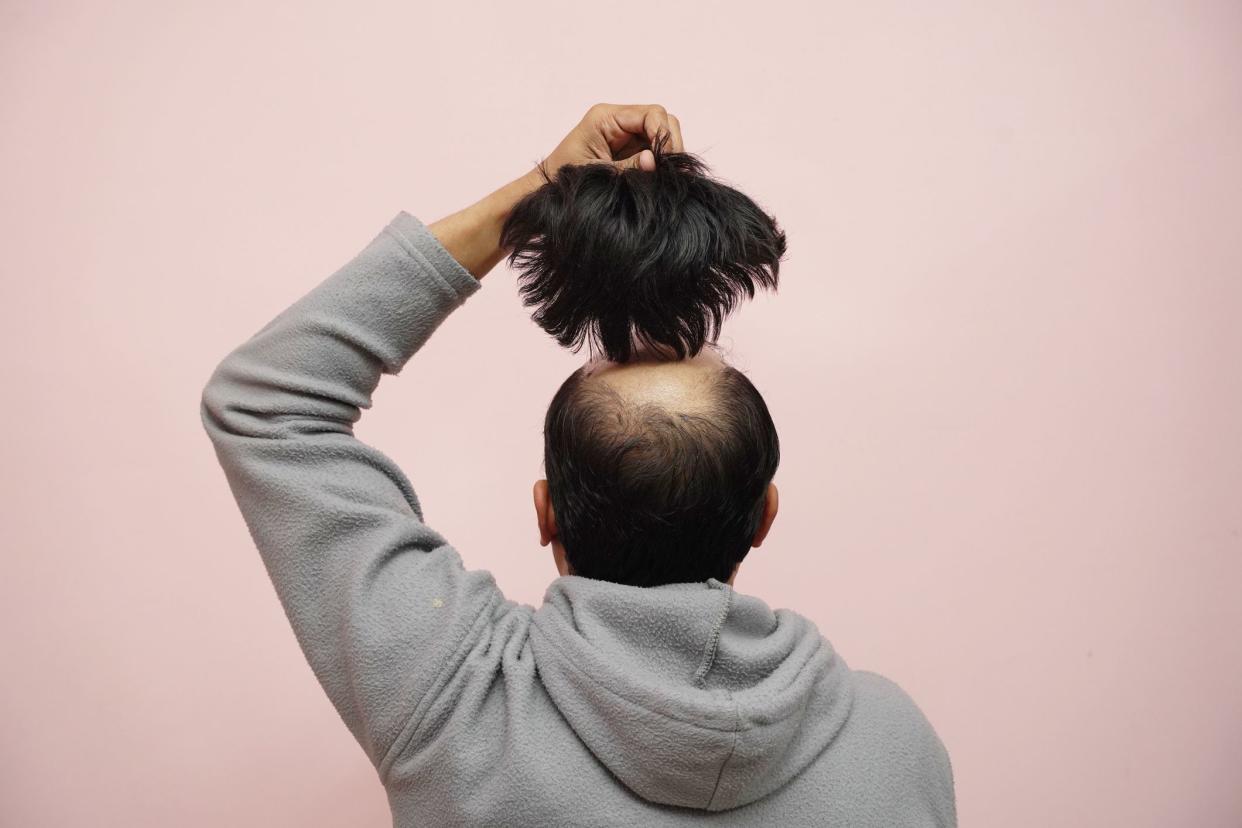
DIY Bald Spot Home Remedies
Wear a Hairpiece
While the idea of wearing a wig to hide a bald spot might seem a little ridiculous, a good quality hairpiece can be surprisingly convincing.
After all, Sean Connery wore a piece in every one of his outings as James Bond, and hairpiece technology has improved pretty significantly since the 1960s, when they were common. However, you should be prepared to pay several hundred dollars (or even more) for a convincing hairpiece that uses real hair.
Wearing a hairpiece may be an option worth considering if you have scarring alopecia — a type of permanent hair loss that destroys hair follicles in certain parts of your scalp.
We’ve talked more about hairpieces, or “hair replacement systems,” as they’re often referred to, in our guide to non-surgical hair replacement options.
(Related: Do Hair Growth Products Work?)
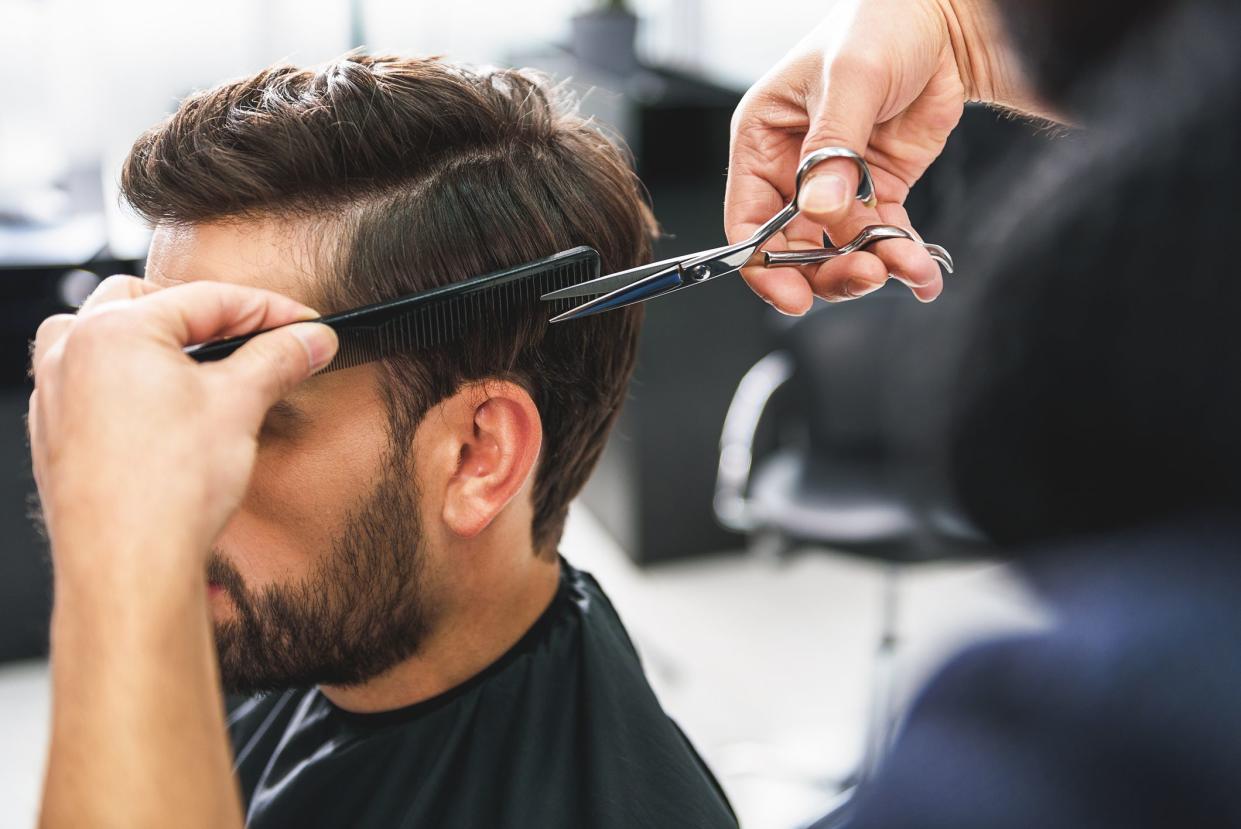
Change Your Hairstyle
If you have a small bald patch that’s surrounded by areas with thick, dense hair, changing your hairstyle may help to make it less obvious.
There are two main ways to do this. The first is to stick with a short haircut like a buzz cut or a crew cut. By cutting your hair nice and short, the contrast between the areas of your scalp with dense hair and the balding patches isn’t so obvious.
The second way is to cut the rest of your hair a little longer, then brush it forward, sideways or back to cover the bald spot. Good haircuts for this include the mop top, slick back, pompadour and quiff, all of which we’ve covered in our guide to the best haircuts for thinning hair.
Finally, there’s the nuclear option: just shave it all off. If you like how you look without hair, this approach hides bald spots for good by turning your entire scalp into one giant, well-maintained bald spot.
If we could all learn how to regrow hair on bald spots without leaving home or calling in a professional, the hair loss treatment industry would go under.
In other words, people don’t choose prescription medications, hair pieces, and surgery because they're the easiest — what’s referred to as “natural” or DIY bald spot treatments don’t have a solid track record of effectiveness.
That said, there is some scientific evidence that some approaches may be helpful.
One issue with the research surrounding natural hair growth treatments is quality. A study that showed peppermint oil may help regrow hair in lab mice doesn’t necessarily prove it will be effective in men suffering from androgenic alopecia, for example.
The best evidence would be research conducted rigorously on humans, but in many cases, that research simply hasn’t been done. That said, what follows is some of the research available:
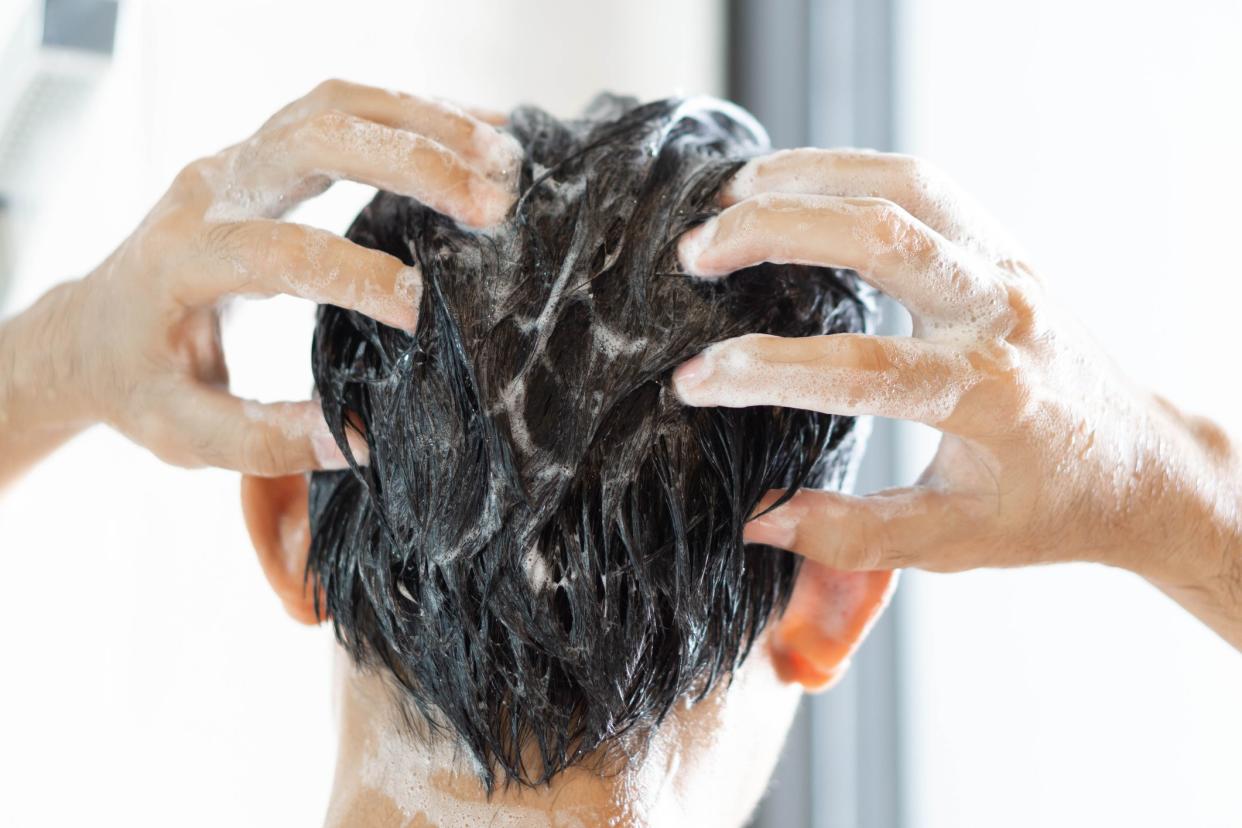
Caffeine
A few studies have indicated topical caffeine — even coffee shampoo — may reduce hair shedding and lessen the speed and intensity of hair loss.
When combined with the traditional medication minoxidil, one study of 60 patients published in the Journal of Mazandaran University of Medical Sciences showed that caffeine was able to improve results when compared with a minoxidil-only solution.

Curcumin
Curcumin may also be able to improve the effectiveness of minoxidil, according to one study published in the Journal of Dermatological Treatment.
Although the compound (found in turmeric) showed no effects when used alone topically, it may increase the absorption of minoxidil into the skin, improving drug delivery, however more research is needed.
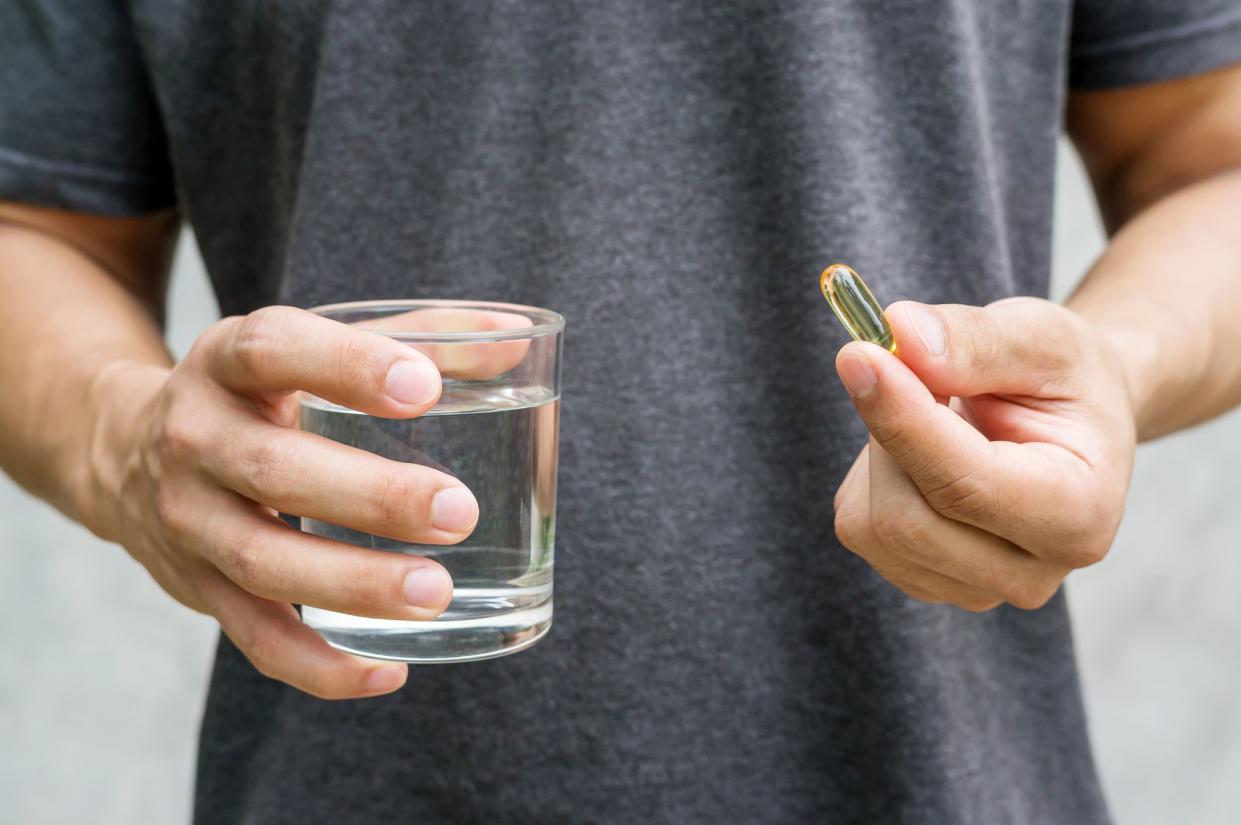
Marine Proteins
Several proprietary marine protein supplements have been tested with potentially positive results, according to a study published in the International Journal of Trichology.
These supplements generally include marine proteins and lipids, and are said to promote hair growth and decrease hair loss.
Of course, shellfish allergies make this option inappropriate for many people.
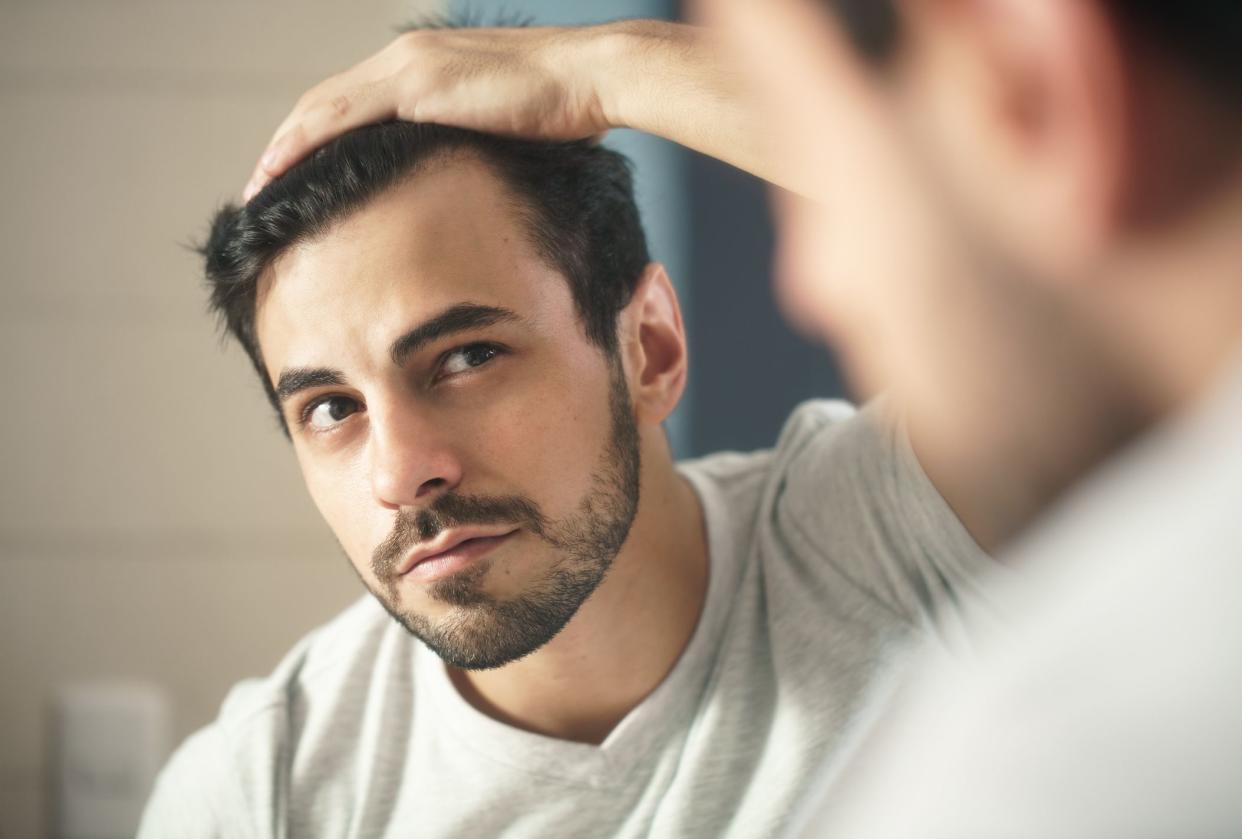
Get Rid of Bald Spots: Final Thoughts
Bald spots can be a serious annoyance, but they’re almost always treatable using medication, surgery or changes to the way you cut and style your hair.
If you’ve noticed a bald spot developing, it’s important to talk to a healthcare provider as soon as you can. The earlier you start treating a bald spot, the more successful you’ll usually be at regrowing hair on the bald spot faster and preventing further hair loss.
This article originally appeared on Hims.com and was syndicated by MediaFeed.org
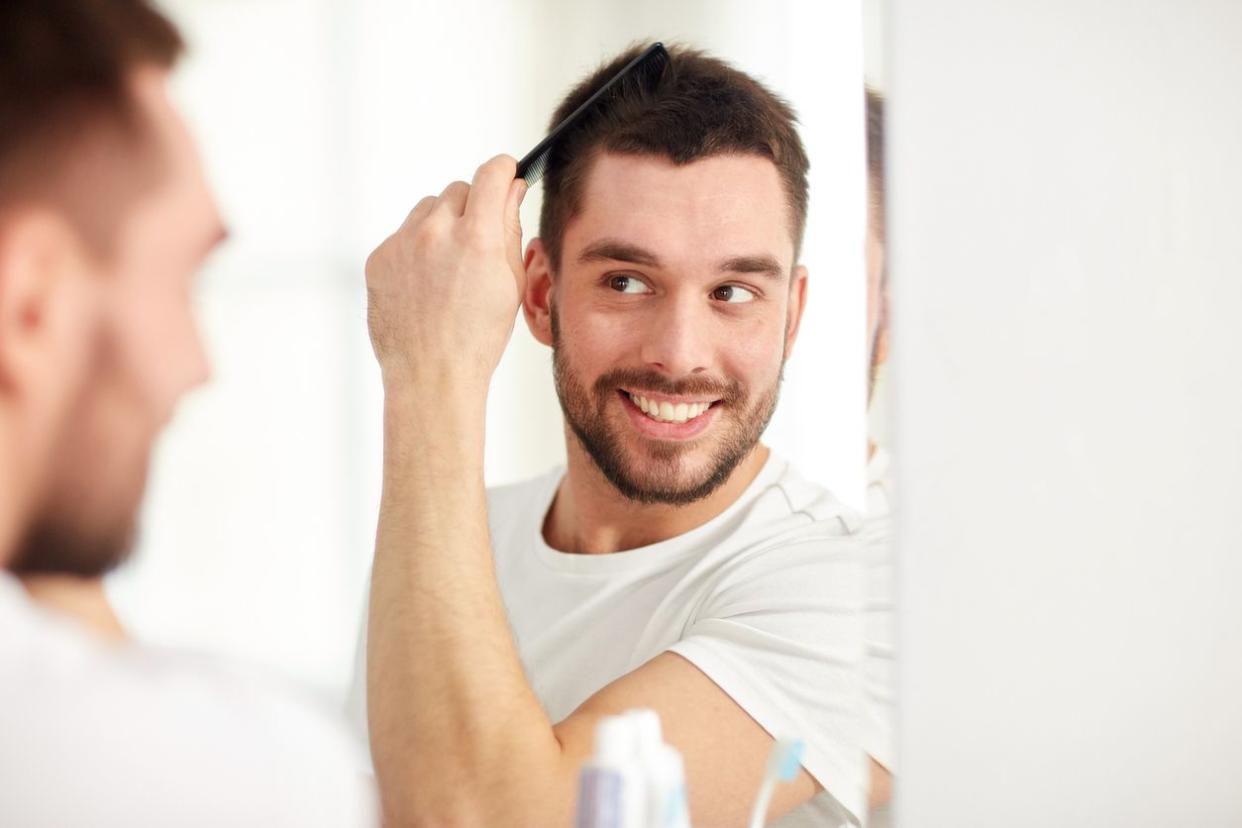
More from MediaFeed
Minoxidil vs. Rogaine: What's The Difference for Hair Growth?
https://www.msn.com/en-us/health/other/minoxidil-vs-rogaine-what-s-the-difference-for-hair-growth/ar-BB1lRbFy
https://www.msn.com/en-us/health/other/minoxidil-vs-rogaine-what-s-the-difference-for-hair-growth/ar-BB1lRbFy
